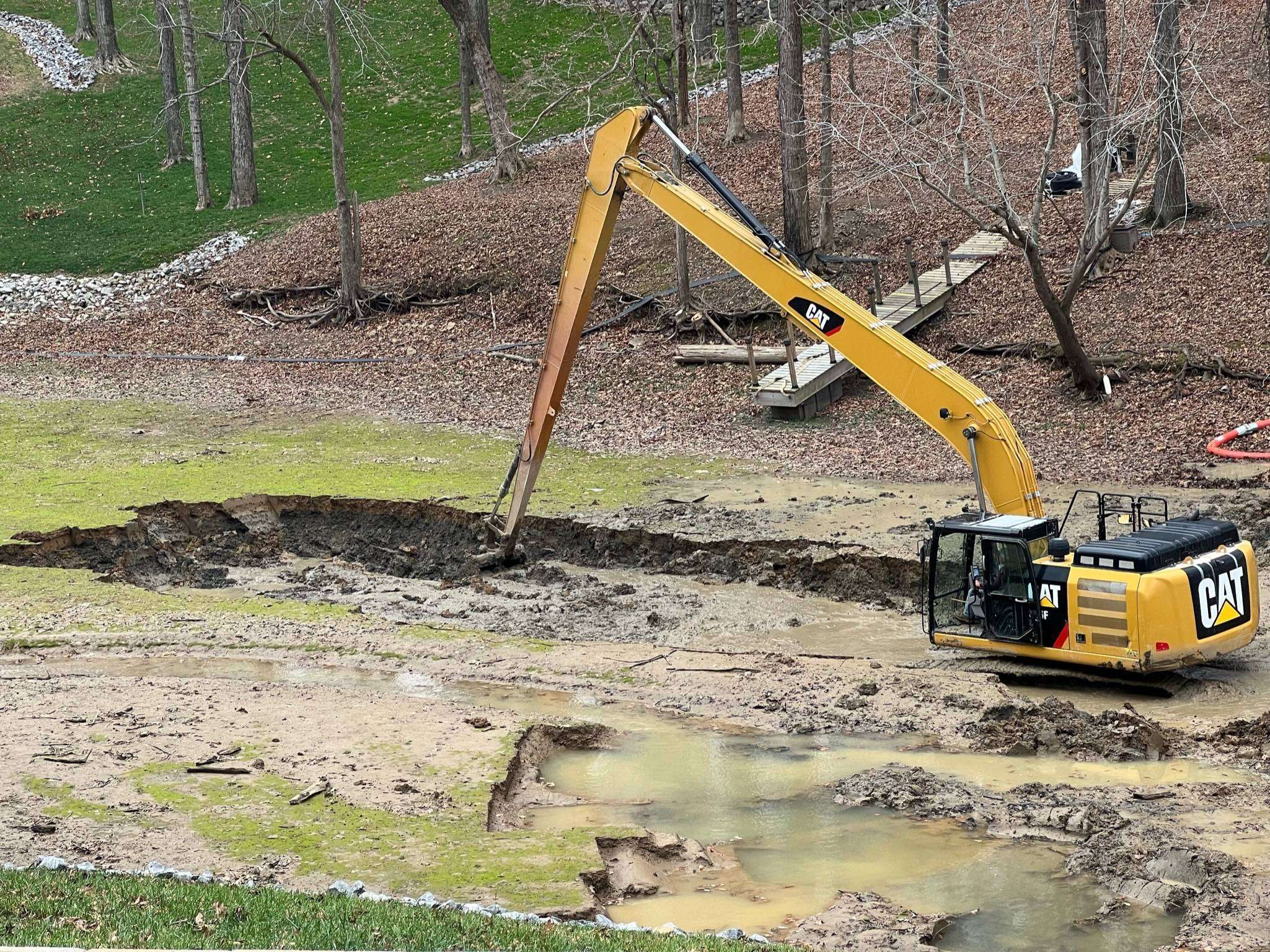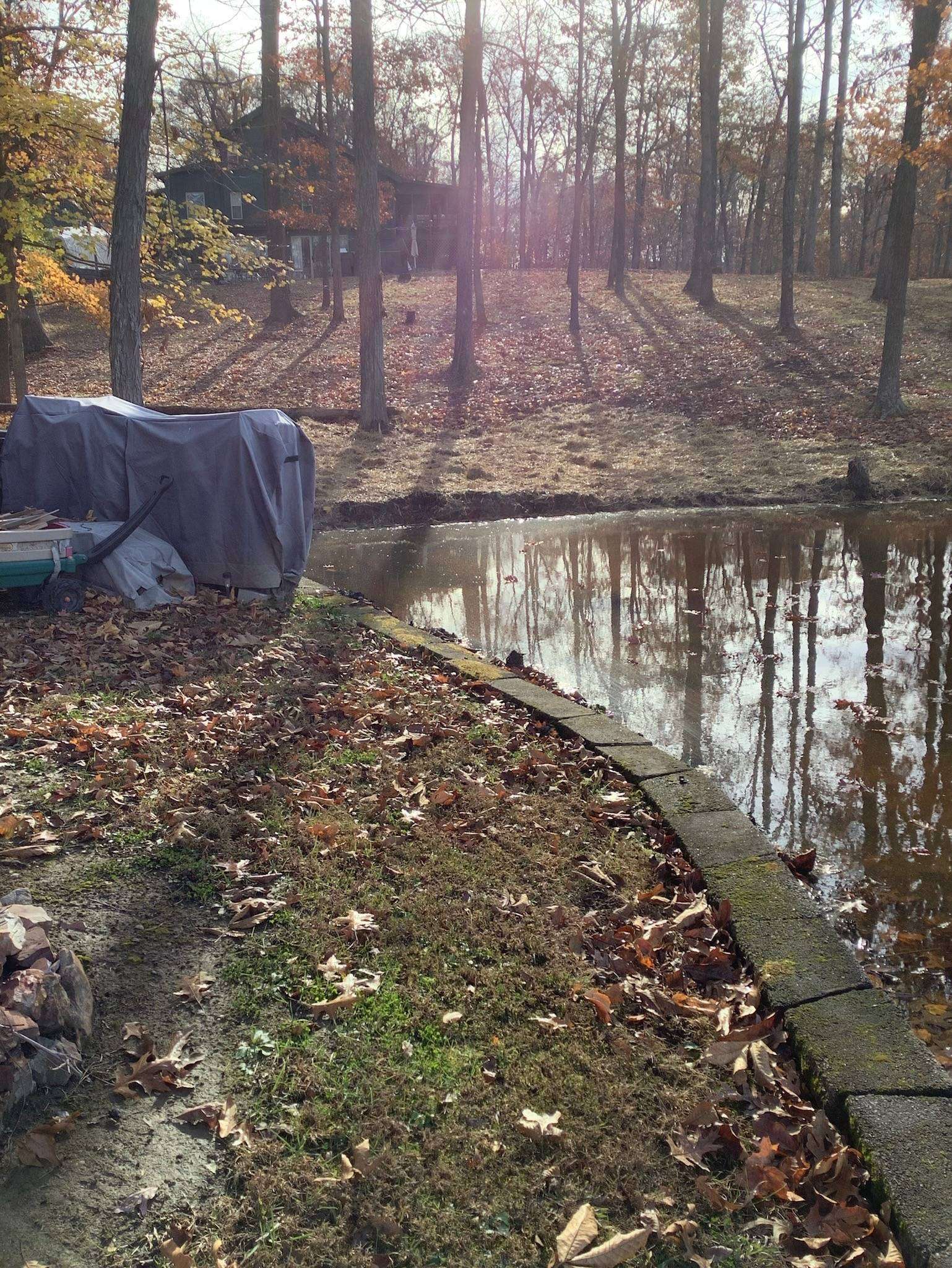There is something so simple and peaceful about watching butterflies flutter across a garden. The South is home to numerous species of butterfly, including such beauties as the American Painted Lady and the Eastern Tiger Swallowtail. What’s more, Kentucky’s climate supports a broad variety of “butterfly-friendly” flowers.
If you’ve ever wondered how to attract more butterflies to your yard, try creating a butterfly garden this summer by planting combinations of the gorgeous flower varieties suggested below.
As with any garden, this one will take a little work, but it can be fun! If you’d rather spend more time tending your butterfly garden and less time weeding, edging, fertilizing, and applying mulch, you can hire seasoned and reliable landscape maintenance specialists to take care of the “less-than-fun” aspects of landscape upkeep while you enjoy creating your butterfly paradise.
1. Hibiscus syriacus (Rose of Sharon)
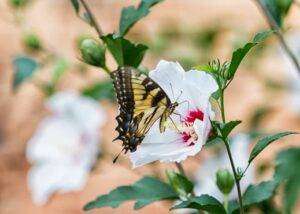
Commonly known as rose of Sharon, this hibiscus blooms from midsummer to fall and does best in full or partial sun. It can survive high heat and humidity and needs very little maintenance to flower year after year. Its blooms come in shades of pink, red, blue, and white and attract hummingbirds as well as butterflies.
Because of its height, it can function as a hedge or screen. Just make sure you give this shrub the space it needs to grow unless you’re ready to cut it back!
2. Echinacea (Coneflowers)
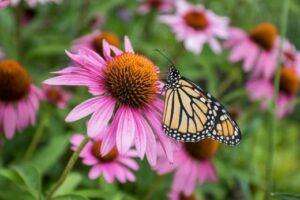
Coneflowers are another lovely, low-maintenance addition to a butterfly garden. They flower over several months, from late spring to fall. They serve beautifully in beds and borders and also make for fantastic, long-lasting pops of color to bouquets and vase arrangements. Echinacea will do best if planted in full or partial sun.
Did you know: Native Americans first used Echinacea to cure infections and heal wounds. In fact, recent studies on Echinacea show that it increases the body’s white blood cell count, which are the cells that fight infections.
3. Butterfly Bush
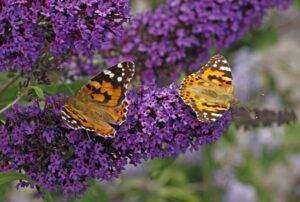
As its name implies, butterflies are absolutely drawn to this plant family, and as an added bonus, so are hummingbirds! Butterfly bushes come in several varieties, featuring clusters of sweet-smelling blossoms in white, warm purples, and cool purples. They are a fast-growing shrub with a fairly good tolerance for cold. They bloom through late spring and early summer and do best in full or partial sun.
Because of how tall and wide Butterfly Bushes can grow, they do well along walls and borders. Due to the nature of its branches, you can also train your butterfly bushes to be weeping trees instead.
4. Rudbeckia fulgida (Black-Eyed Susan)
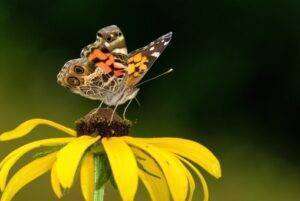
Rudbeckia fulgida, frequently referred to as Black-Eyed Susan, has several varieties that share a similar golden yellow petal color and a prominent, dark center. Their blooming season usually lasts from midsummer to fall, and they thrive the most in full or partial sun. This easy-to-grow perennial is a great addition to borders and flower beds and is perfect for adding a cheery touch to a butterfly garden.
Like echinacea (coneflowers) Black-Eyed Susans also look wonderful as cut flowers in bouquets and vases!
5. Hemerocallis (Daylilies)

The Daylily family are a low-maintenance, heat-tolerant bunch with richly-colored, trumpet-shaped flowers that look stunning alone or next to flowers of contrasting colors. Each Daylily bloom generally opens up in the morning and lasts for a maximum of 24 hours before withering, usually at night. During their blooming season, a new bloom may take the place of the withered one the next day on the same flower stalk.
To maximize your enjoyment of Daylilies, plant different varieties together so that you can stagger their blooming seasons.
6. Aster
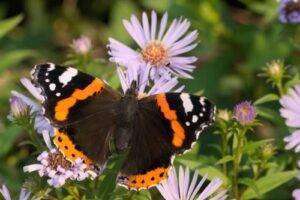
Asters come in countless varieties and come in as many shades of purple and pink. Dozen of aster species are actually native to Kentucky and bloom during summer and fall. The Aromatic Aster (Aster oblongifolius, also known as “October Skies”) will favor you with little, lavender-blue, daisy-like blossoms even during September and October. Its flowers tend to grow in mounds and offer abundant nectar for butterflies.
Aromatic Asters will grow best in full sunlight and require very little watering. Aside from looking lovely in flower beds, they are also quite charming in pots and containers.
Sometimes designing the best layout for your landscaping can be a bit of a challenge to tackle on your own, especially when you’re trying to keep in mind ideal locations for flowerbeds, borders, and walkways. At times, excavation might be necessary for the ideal landscape. If you need a hand with creating your dream backyard, Supreme Enterprises has experienced landscape designers that will work with you to achieve the results you want. After all, you don’t just want the butterflies to enjoy your yard–you want to enjoy it most of all!


